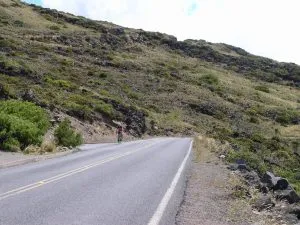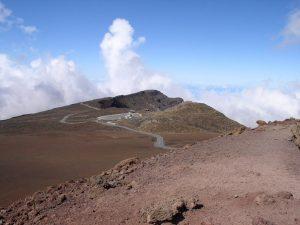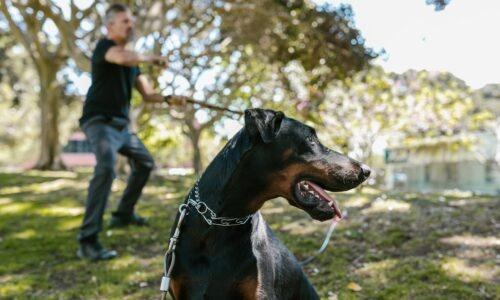The most common question that I get is “how can I get better at doing hills?”
The answer to this is in 3 parts;
1) Change your gearing
CASSETTE: Probably the easiest of the ‘big-3’ to implement, especially with Shimano’s new 68xx and 90xx derailleurs that can handle larger cassette gears right out of the box. For larger gearing, the CS-6800 offers several viable options, 11-28T, 14-28T and 11-32T. Since the CS-9000 includes several sprockets made from titanium, it is considered a racing cassette, therefore, it has fewer options. 11-28T and 12-28T are its largest offerings.
I recommend the Ultegra CS-6800 as the best price/performance.
- 11-28T: 11-12-13-14-15-17-19-21-23-25-28 (my configuration)
- PROs: Gives a good spread in gearing. 11T for go fast and 28T for climbing
- CONs: From 15 to 25, there is a 2 gear jump and from 25 to 28 there is a 3 gear jump.
- 14-28T: 14-15-16-17-18-19-20-21-23-25-28
- PROs: Also known as junior gearing which makes it USAC legal for juniors who run a 52 front chainring. Gives the tightest group of gearing.
- CONs: From 21 to 25 there is a 2 gear jump and from 25 to 28 there is a 3 gear jump. Since 14 is the smallest gear, you lose top end speed.
- 11-32T: 11-12-13-14-16-18-20-22-25-28-32
- PROs: Gives the largest spread in gearing including a 32T ‘bail-out’ gear for the STEEPEST of hills
- CONs: Large jumps including a 4-gear jump between 28 and 32.
CHAINRINGS: With Shimano’s latest redesigned cranksets, you can run any  combination of large/small chainrings you wish. In the past, you were limited to a couple of options if you ran a 110BCD crank and a couple of options if you ran a 130BCD crank. For the large chainrings, Shimano offers 50, 52, 53, 54 and 55T options. For the small chainrings, 34, 36, 38, 39, and 42T are available. Shimano recommends that you stick with a maximum of 16T difference between the small and large chainrings.
combination of large/small chainrings you wish. In the past, you were limited to a couple of options if you ran a 110BCD crank and a couple of options if you ran a 130BCD crank. For the large chainrings, Shimano offers 50, 52, 53, 54 and 55T options. For the small chainrings, 34, 36, 38, 39, and 42T are available. Shimano recommends that you stick with a maximum of 16T difference between the small and large chainrings.
Their standard configurations are 50-34T, 52-36T, 52-38T, 53-39T, 54-42T, 55-42T, but, with Di2, the drivetrain can easily handle a 52-34T (my configuration). In fact, I recently setup a new Di2 system for a customer who wanted a 53-34T ROTOR Q-Ring…works perfectly.
For climbing, I recommend a 34T small ring with a 50T large chainring.
For overall, I recommend a 34T small ring with a 52T large chainring.
2) Change your weight
It has been my experience that for every 10 pounds of body weight lost equates to one  more gear you can push on the cassette. For example, if you are 200 pounds and can push a 34/28T up a hill and you lose 10 pounds, you should be able to push a 34/25T with the same effort. The only drawback to weight loss is that all ‘roadies’ push hills as hard as they can so losing weight never makes hills any easier since you will just push a bigger gear up the same hill. You will be faster, but the hill won’t feel any easier.
more gear you can push on the cassette. For example, if you are 200 pounds and can push a 34/28T up a hill and you lose 10 pounds, you should be able to push a 34/25T with the same effort. The only drawback to weight loss is that all ‘roadies’ push hills as hard as they can so losing weight never makes hills any easier since you will just push a bigger gear up the same hill. You will be faster, but the hill won’t feel any easier.
The easiest way to lose weight is to cut out ALL SUGAR. See the movie ‘FED UP’ on Youtube or Netflix for inspiration.
3) Change your training
Ideally, you want to be an all-around cyclist so you will need to include hills in your workouts. But, you can simulate hills as well as get better at hills with certain kinds of workouts, namely intervals and spinning.
Contact me at [email protected] to get started on your road to better climbing with a personalized workout.
Rick Schultz
USAC certified coach, CPBT, CSI
[email protected]

I have always enjoyed bicycling and, through a series of coincidences, became a Bicycle Industry Consultant and Product Tester. I test prototype products for companies and have published only off the shelf production products on biketestreviews.com.


